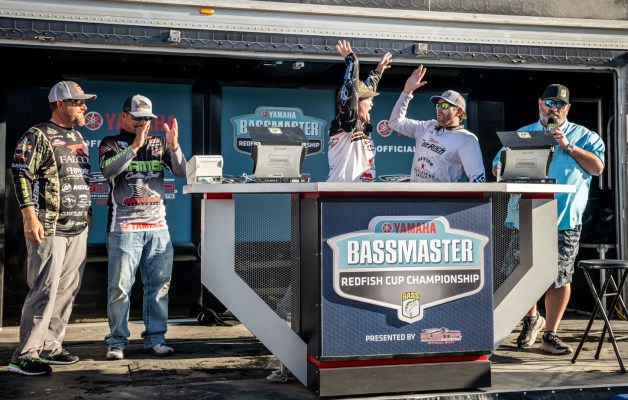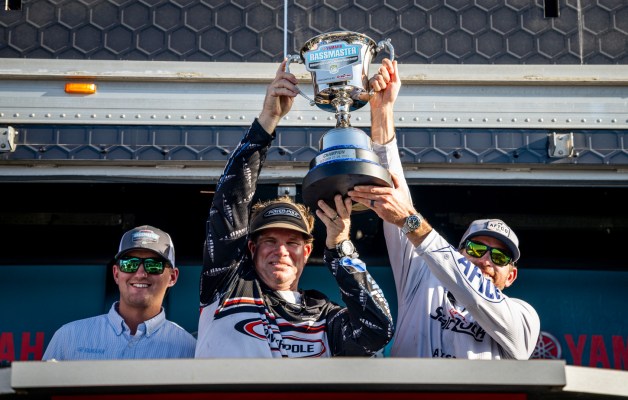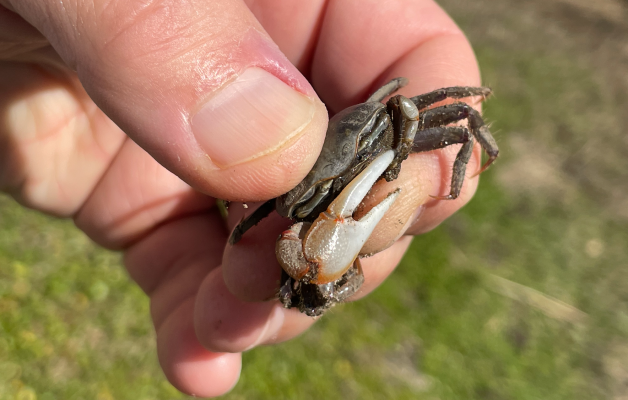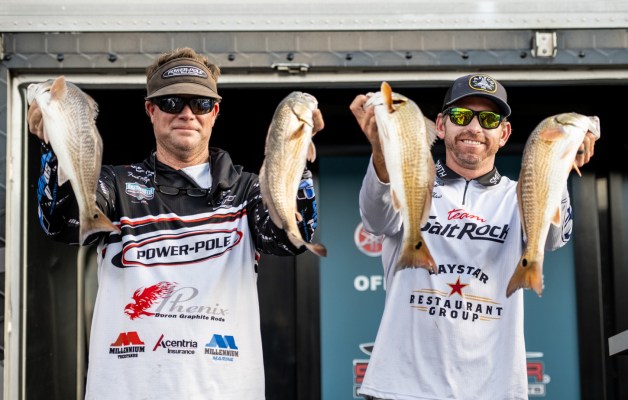
Rods, reels, line, leader, lures — all important elements of the redfish angler’s offense, but given the week’s weather outlook, a generous dose of versatility will take a prominent position in the successful game plans.
Yeah, it’s tournament week, so the weather’s supposed to get screwy. However, pre-event talks with local pro Kevin Akin provided insightful analysis of a competition likely to see a lot of shifting.
“We have a southeast wind of 20-30 mph on Day 1 and then we literally have wind out of the opposite direction on Day 2,” Akin said. “You’re going to get a lot of water that falls out and a lot of water that moves in.”
“It’s a real struggle when you have water going up and down and constant changes. It gets very difficult very quickly.”
If anyone can attest to weather impact, it’s last year’s champions, Bassmaster Elite Chris Zaldain and IFA Redfish Tour pro Ryan Rickard. After a solid start with their Day 1 total of 14-10, a Day 2 weather change limited them to 11-5. Improving final-round conditions delivered their heaviest catch — 17-5 — and sealed their victory by a margin of 2-12.
“After three days of practice, all of the teams here have an area in their where they can start and catch a few redfish; but at some point during this tournament, wind will blow on that spot,” Zaldain said. “Not only does wind make it difficult to present your bait, but the whole wind/tide factor (wind pushing or pulling water levels higher or lower than normal tide stages.
“Looking at a tide chart is not always accurate, because of that wind influence.”
Know the game
Notably, wind bears different impacts throughout tournament waters (Port O’Connor south to Bird Island). As Akin explains, the variety of habitat features bodes well for angling opportunity, but it also presents geographic challenges.
“The closer you get to Port O’Connor on the north side, some of those marsh lakes have a lot of grass and when the water drains out, it’s going to drain clean,” he said. “Some of the areas north of Port Aransas, especially Rockport, toward Port O’Connor will get very dirty because of the wind; it will mud it all up.
“In our southern end, it’s a complete grass flat, so when it blows, it actually gets really clean. It will get dirty in the deeper water, but the flats will stay clean because of the grass.”
If determining a strategy for this tournament sounds tricky, it is. But everyone’s playing on the same wet field. Site selection will definitely play a key role in each team’s fortune, but persistence will often carry a team through lean times.
“At the end of the day, you just got to keep your nose down and fish; you pay attention to what you’re doing and you don’t miss the bites you get,” Akin said. “The other thing is being fluid; being able to say ‘That looks good, let’s check that out,’ and not getting too set in what you’re doing. That (particular pattern) may not work for two different winds.”
To that points, Akin said this event is likely to see the recipe for success blending different ingredients every day.
“I think most of the anglers here have fished for a very long time so they’ve already looked for different weather patterns,” Akin said. “You could see teams fishing totally different areas (on days 1 and 2). You could see a lot of people in a lot of different area codes because of the weather.”
Survive, then thrive
Fortunately, Sunday’s forecast calls for lighter winds and more stable conditions. Generally, Day 3 looks like the day to make up any lost ground or surge ahead, if the first two days have been generous.
“I think the Sunday forecast is calling for a cupcake; we’re supposed to get light winds, with little bit (more) wind later in the day,” Akin said. “It’s pretty much going to be a stellar weather day, which can be really good, depending on what you’re fishing.”
“If you’re fishing in marshes and places where you need the weather down, it’s going to help exponentially. For guys who are fishing wide open flats, it’s going to be tougher because you can’t move with the wind.”
Akin notes that light winds help anglers looking for schools of redfish, as calm water means better visibility.
“When it’s calm, you can see them moving, you can see them on top blowing bait,” he said. “Whereas anything having to do with grass flats, you’re going to have to get on smaller contained areas with no wind.
“If you get on a big flat with 20 scattered fish, you can’t move and you can’t put the trolling motor down because those fish are going to hear you and you’ll never get into casting range.”
Putting it all together
To bottom line it, this tournament will test anglers in terms of their ability to make good decisions — often on the fly — and know when to shift gears.
“Either someone who finds the perfect program for all three conditions will win this event, or the people that make the right adjustment all three days,” Akin said. “All three days will have different struggles, so it will be interesting to watch.”
Although it’s an easier-said-than-done scenario, Akin said the south end of the tournament waters (where Zaldain and Rickard won in 2021) tends to see good numbers of fish remaining on or near the grass flats though changing conditions. Also, the upper end’s grassy marsh ponds and lakes can hold fish that simply move to the leeward shoreline as wind direction changes.
“You’ll have guys fishing marshy stuff with a popping cork rig (lure suspended beneath a noisy float) and they’re going to get bit, even in dirty water,” Akin said. “It’s going to depend on the amount of fish guys found.”





